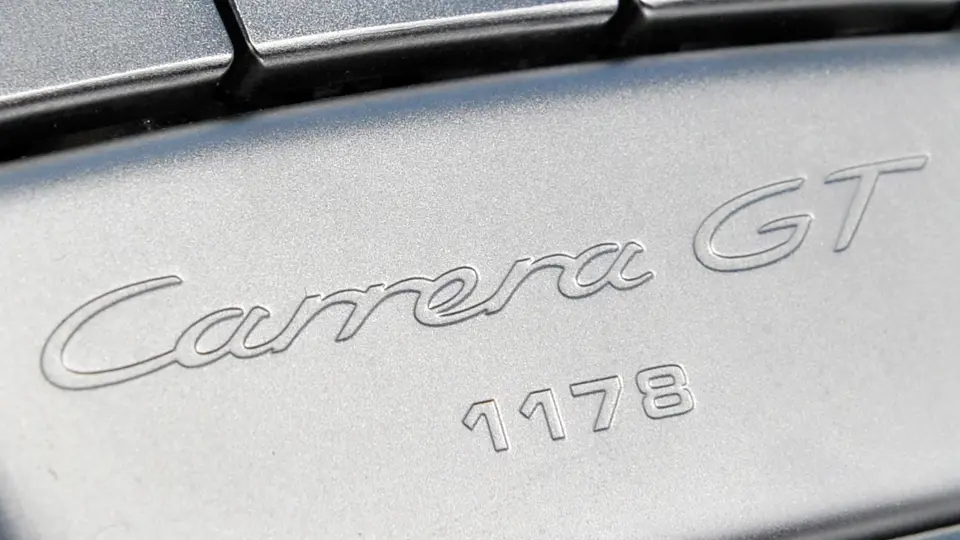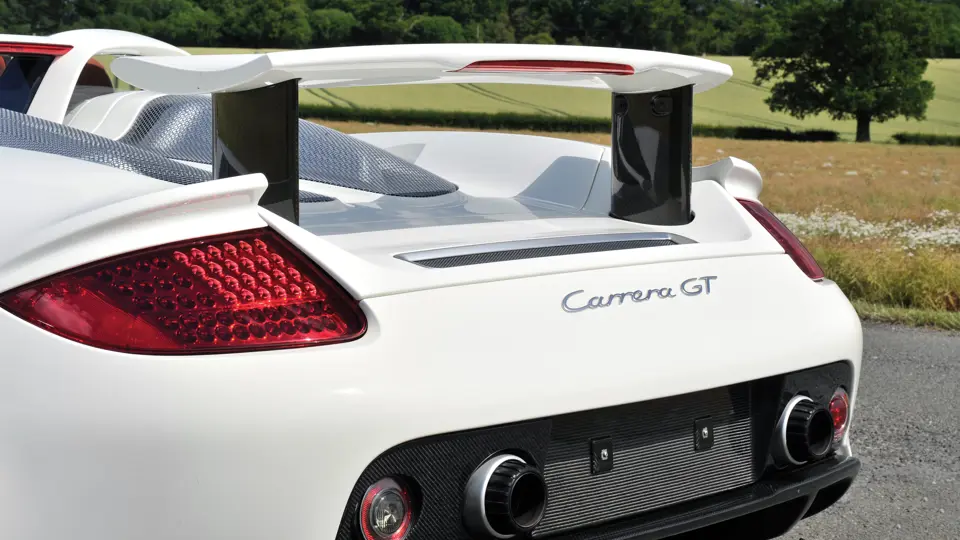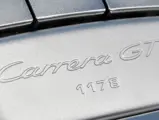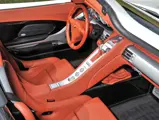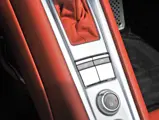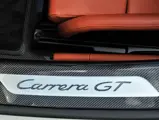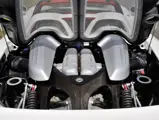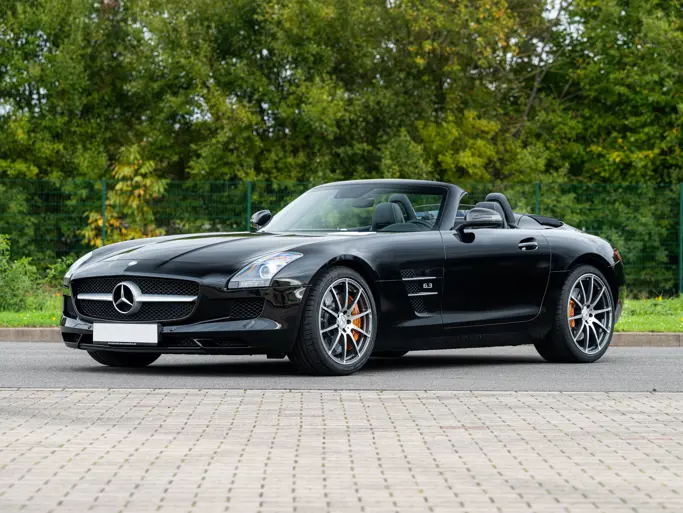605 bhp, 5,733 cc DOHC mid-mounted V-10 engine with Bosch Motronic electronic fuel injection, six-speed manual transaxle, independent front and rear suspension with pushrod linkage, and four-wheel carbon-ceramic composite disc brakes. Wheelbase: 2,730 mm
Porsche’s Carrera GT offers brilliant performance in a street-legal supercar which was based on a chassis originally intended to race at the 24 Hours of Le Mans. Its ancestry derives from the Porsche WSC-95 that won Le Mans in 1995 and 1996, and it has evolved from the Porsche LMP1-98 prototype and the 911 GT1 prototype, which conquered the famed 24-hour endurance contest in 1998. When rule changes eliminated both of those programs, Porsche engineers laid down a new mid-engined prototype racer largely based on lightweight materials for 1999. It was packed with Formula One technology, including a normally aspirated DOHC V-10 engine of 5.7 litres, and was capable of reaching 330 km/h.
However, soon after prototype testing had begun, Porsche management decided that a new large-volume SUV would take precedence, being deemed critical to the company’s continued financial health. The Carrera GT’s engineering team was reassigned to what would become the Cayenne. Since the basic design of the new Carrera GT was already complete, a finished prototype in street trim was unveiled at the Paris Auto Show in 2000. Public response was extremely positive, and that fact, along with a much-improved bottom line, prompted Porsche to revive the Carrera GT as a state-of-the-art, low-production mid-engined supercar.
Beyond its highly advanced carbon-fibre chassis and sub-frames, the Carrera GT utilised a number of interesting features. The dry-sump, 72-degree, V-10 all-aluminium engine had originally been developed for the Footwork F1 team in 1992. It featured four-valve cylinder heads and titanium connecting rods within its Nikasil-coated cylinder bores. To achieve a very low centre of gravity and high engine speed (its redline is 8,400 rpm), both the flywheel and clutch were quite small, utilising the twin-dry plate Porsche Ceramic Composite Clutch package, which was only 6.7 inches in diameter. The six-speed manual transaxle fed a limited-slip differential.
Even with the extensive use of lightweight materials, the Carrera GT weighed almost 3,100 pounds, which is attributed to the substantial chassis reinforcement installed to compensate for having removable roof panels. The chassis’ rigidity is impressive. Other weight-saving components included pressure-monitoring centre-lock wheels of forged magnesium, 19x9.5 inches in front and 20x12.5 inches in the rear, which were secured with racing-style centre-lock nuts. The steering was power-assisted, as were the huge anti-lock-bolstered disc brakes, whose rotors were of the same lightweight material as the clutch discs, providing incredibly effective stopping power. Occupants were cosseted by a fully trimmed leather interior, air conditioning, power windows, heated mirrors, a dot-matrix display screen, an entertainment system, aluminium racing-style pedals, and a footrest for the driver. Outside, there were Xenon headlights and an automatically deployed rear spoiler. Porsche claimed a 0–97 km/h acceleration time of 3.8 seconds, 0–200 km/h in just 9.9 seconds, and the promised maximum of 330 km/h.
The company announced it would build only 1,500 examples, priced at around $440,000, and dealers would be allotted no more than one each to begin with. As in the case of the all-wheel-drive, twin-turbo Type 959 a decade earlier, the company was flooded with orders and deposits from wealthy customers. Production began in Leipzig in 2004 and the first deliveries began soon after. Although total sales did not reach their initial target, every example produced found a buyer, with the vast majority disappearing into private collections.
PAINT-TO-SAMPLE
This Carrera GT is breath-taking in special-order non-metallic Sand White (Code 98) with a Terra Cotta (Code MZ) leather interior, and it is believed to be the only one to have left Porsche’s Leipzig factory in that colour. Along with its paint-to-sample colour, this striking single-owner Carrera GT was ordered with air conditioning—a given, as it was originally designated for the Gulf Arab States—and a Becker Online Pro stereo CD and radio. Recently, the car was imported to the UK; although EU taxes have been paid, the car has not yet been registered. Soon following its import to Britain, the metric speedometer was converted from kilometres per hour to miles per hour.
This car has been properly serviced throughout its life by authorised dealer Porsche Kuwait. Minor servicing was performed nearly every year, starting in 2006, with a major service and a clutch replacement in April 2011, when the car was showing just over 18,000 kilometres. An additional minor service was performed in September 2013 by Porsche Kuwait, with 19,300 kilometres showing on its odometer. After subsequently being exported from the Middle East, the Carrera GT was last serviced in January 2015 at Porsche Reading UK, with only 19,553 kilometres on its odometer. The consignor notes that there is no evidence of prior damage, and consistent carbon-fibre weave is visible across the car. Also included are the proper tool kit and an up-to-date warranty book.
Carrera GTs are “must-have” items for the serious Porsche collector. Here is a single-owner, low-mileage example in a lovely and unique colour combination—a rare opportunity indeed.

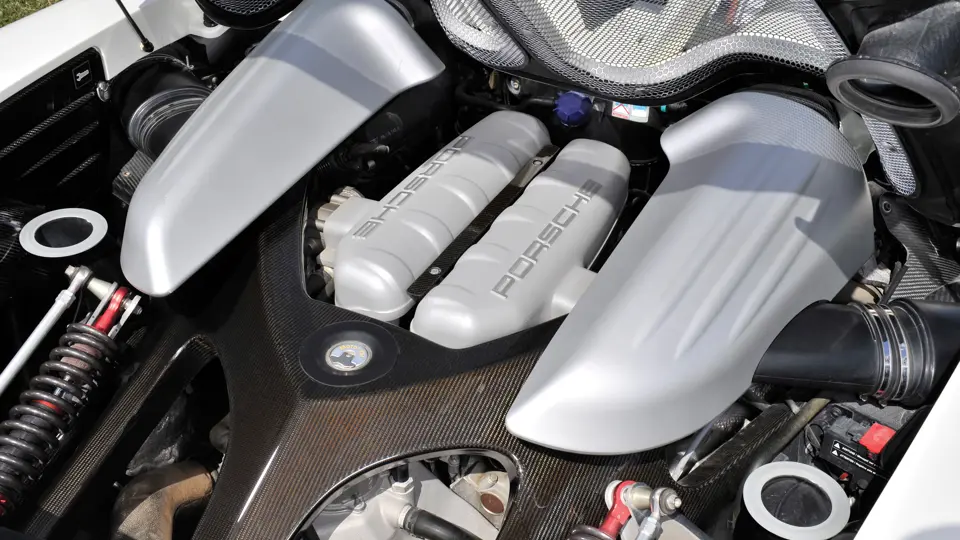
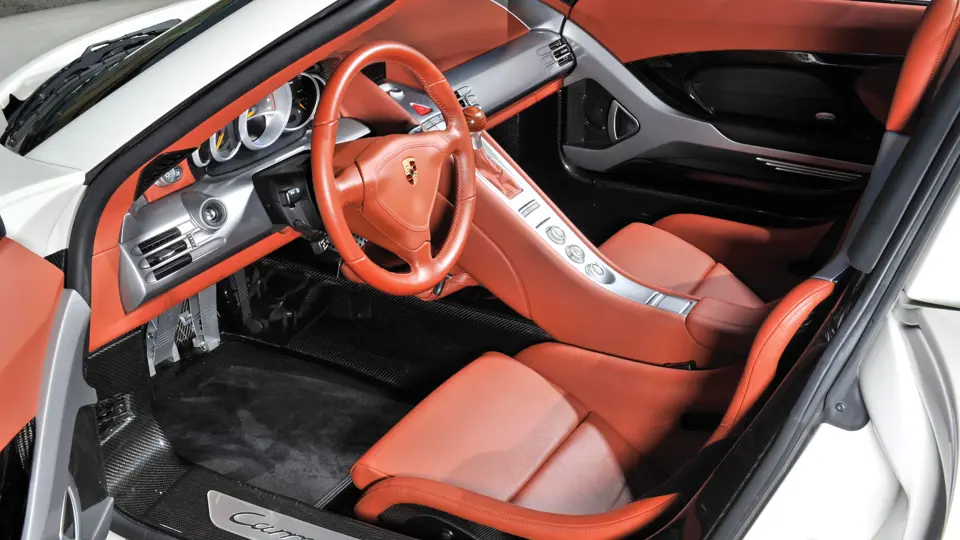




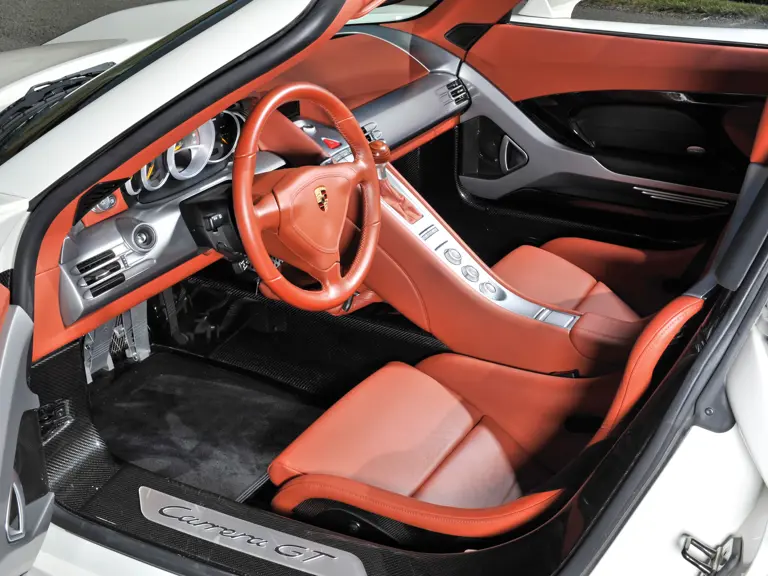
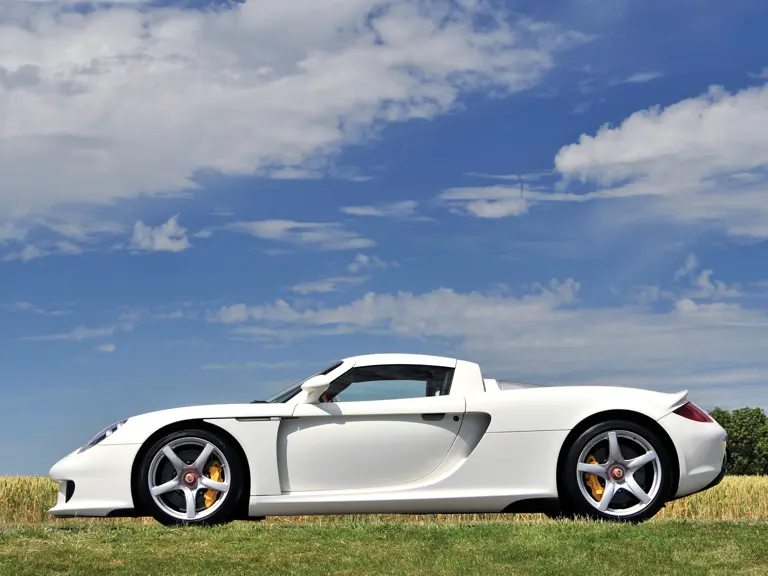
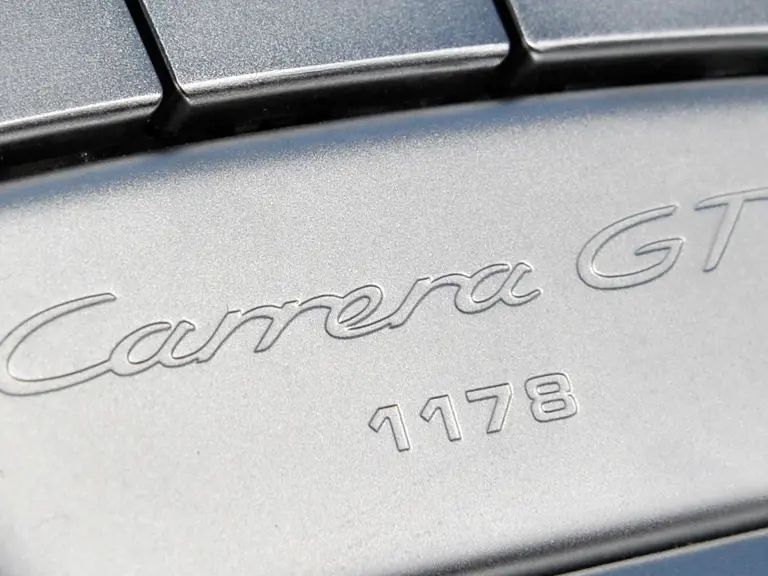
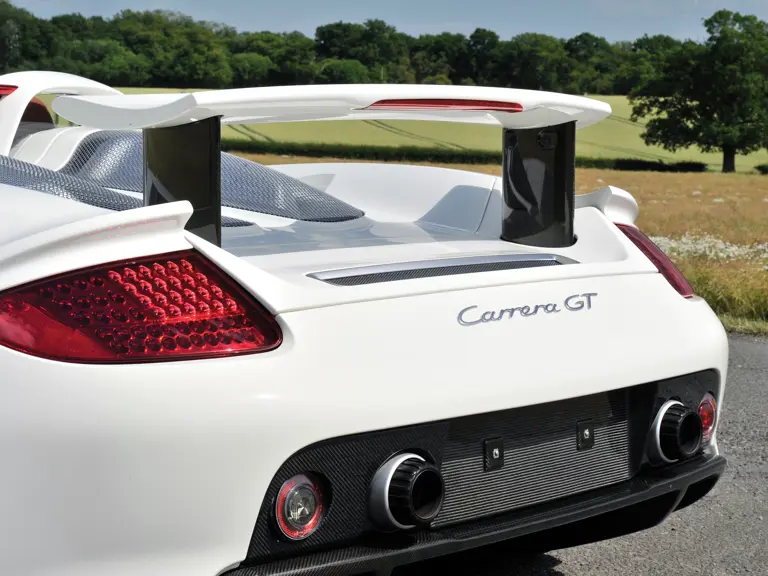
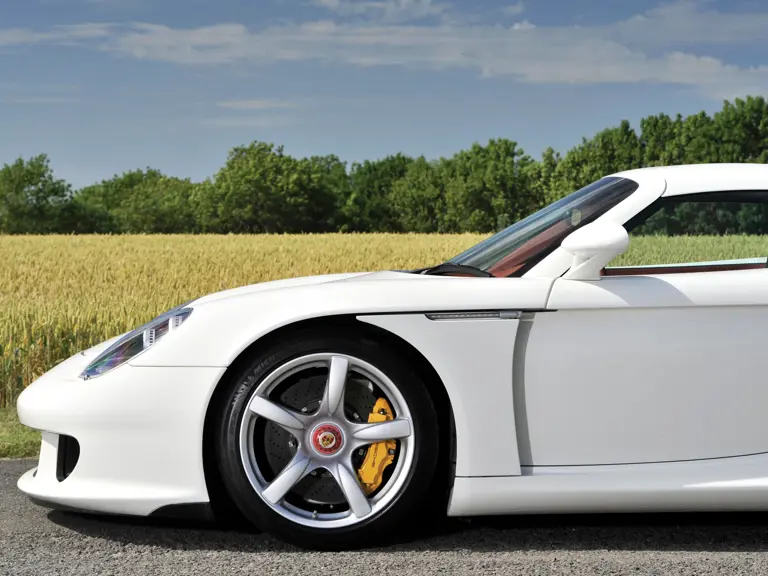

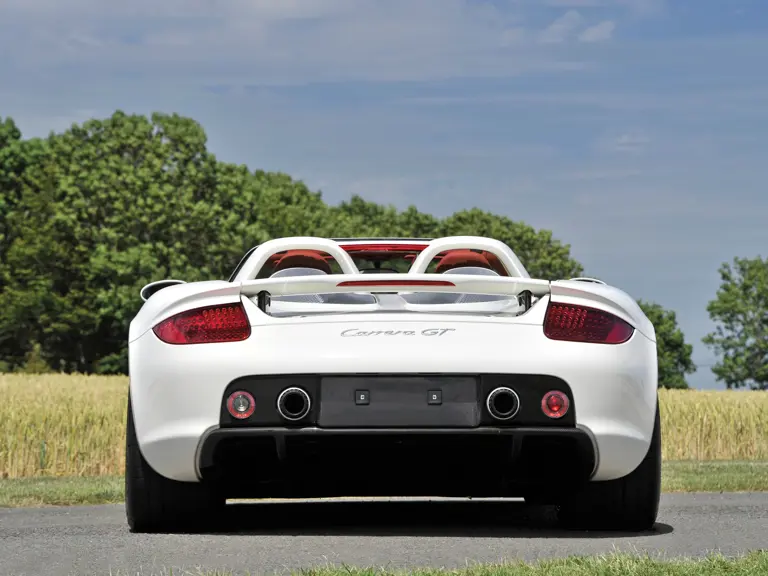
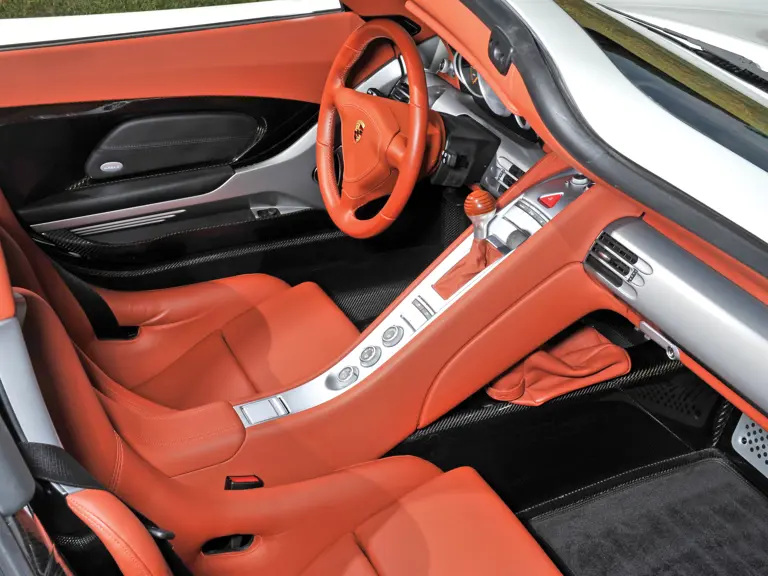
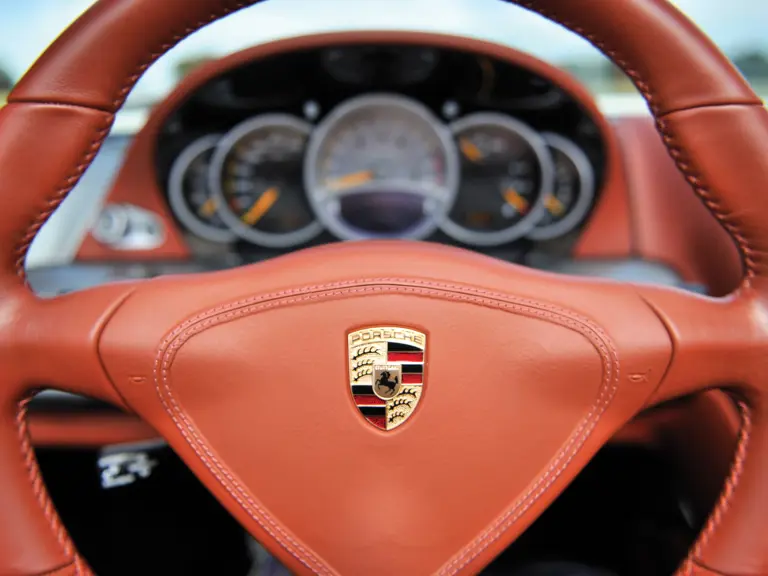
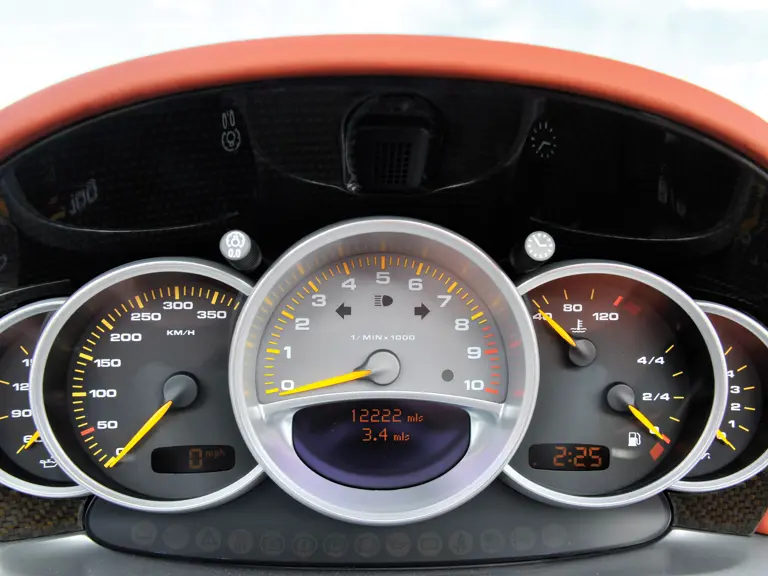

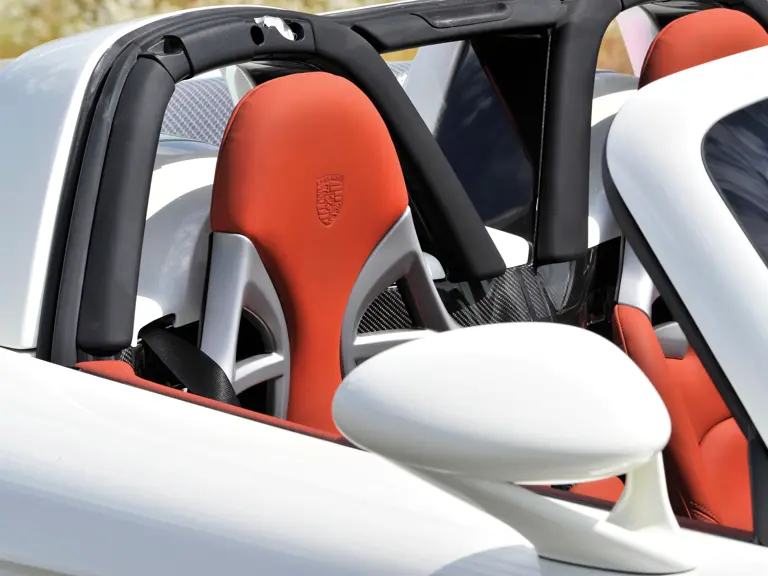
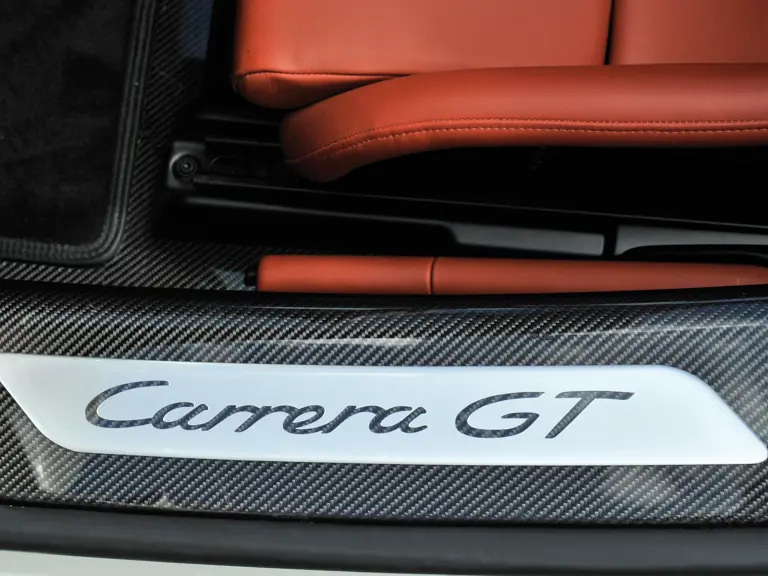


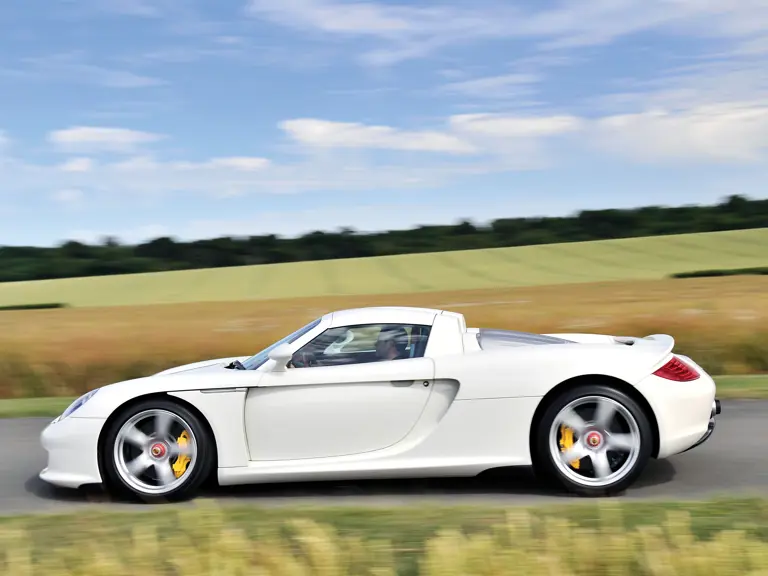

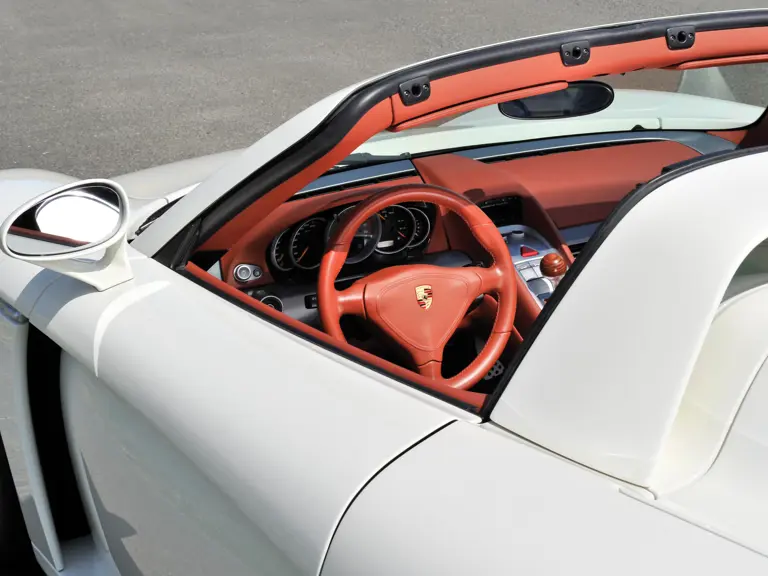
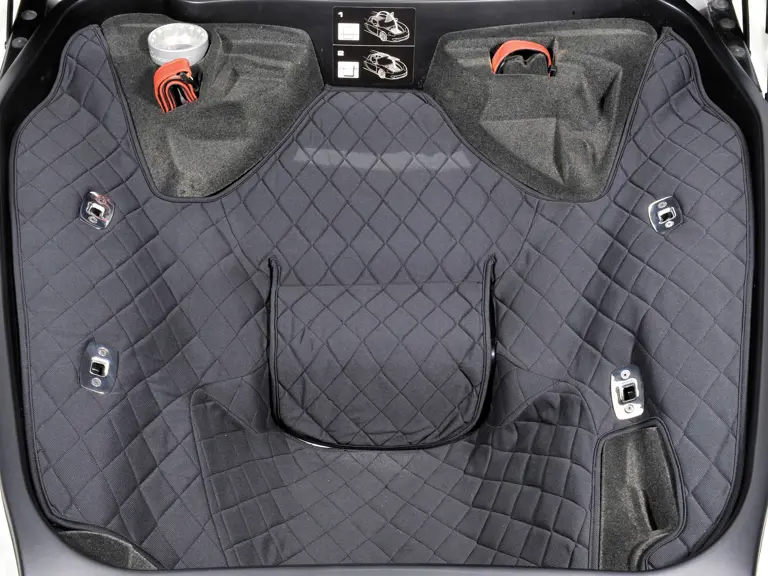
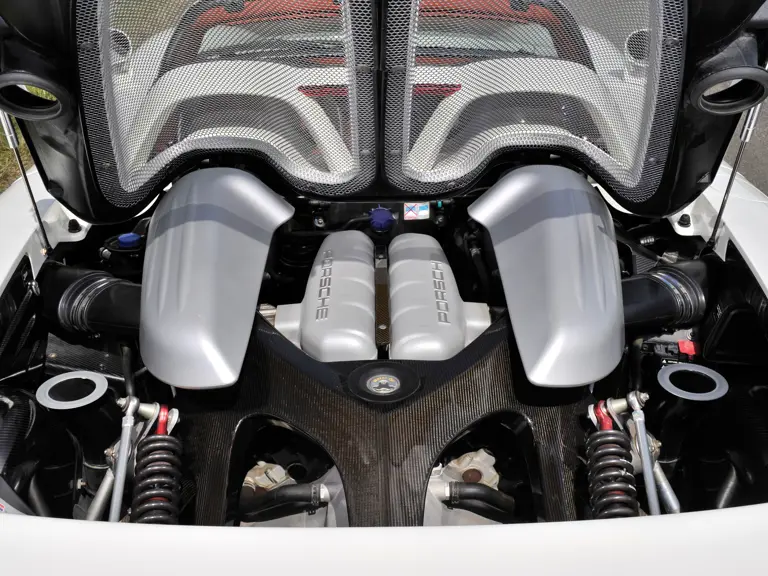



 | London, United Kingdom
| London, United Kingdom

